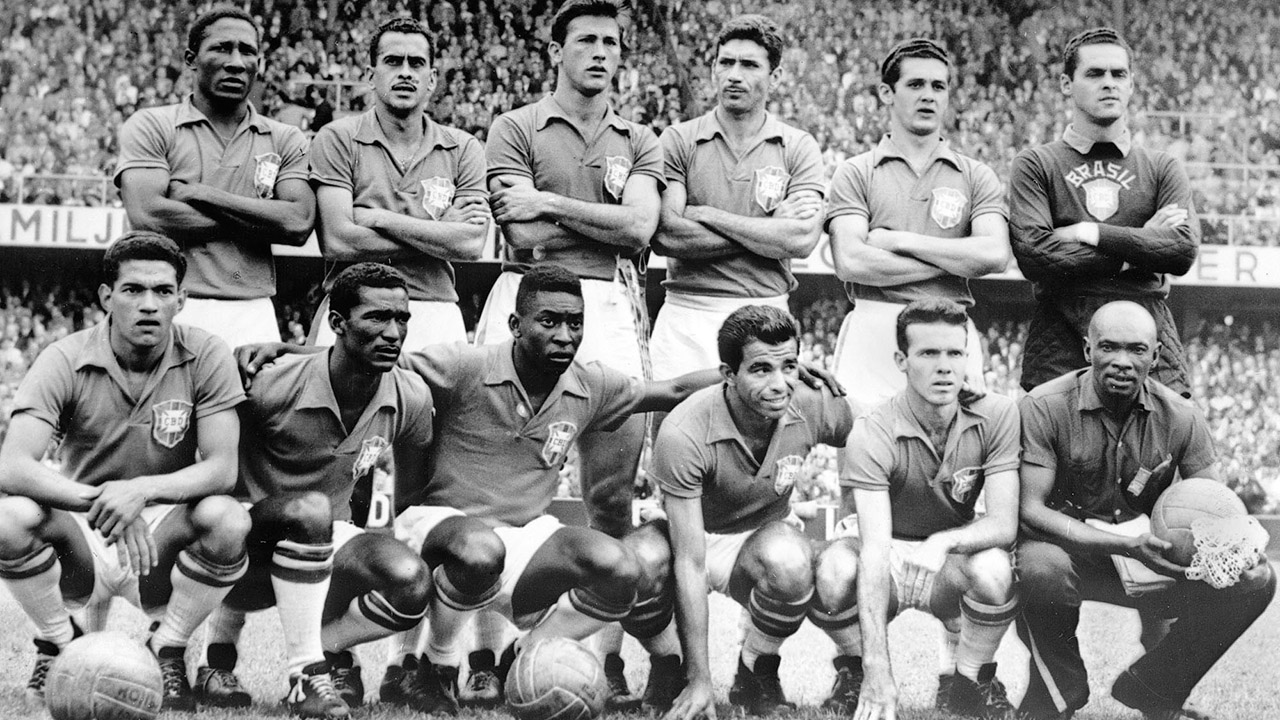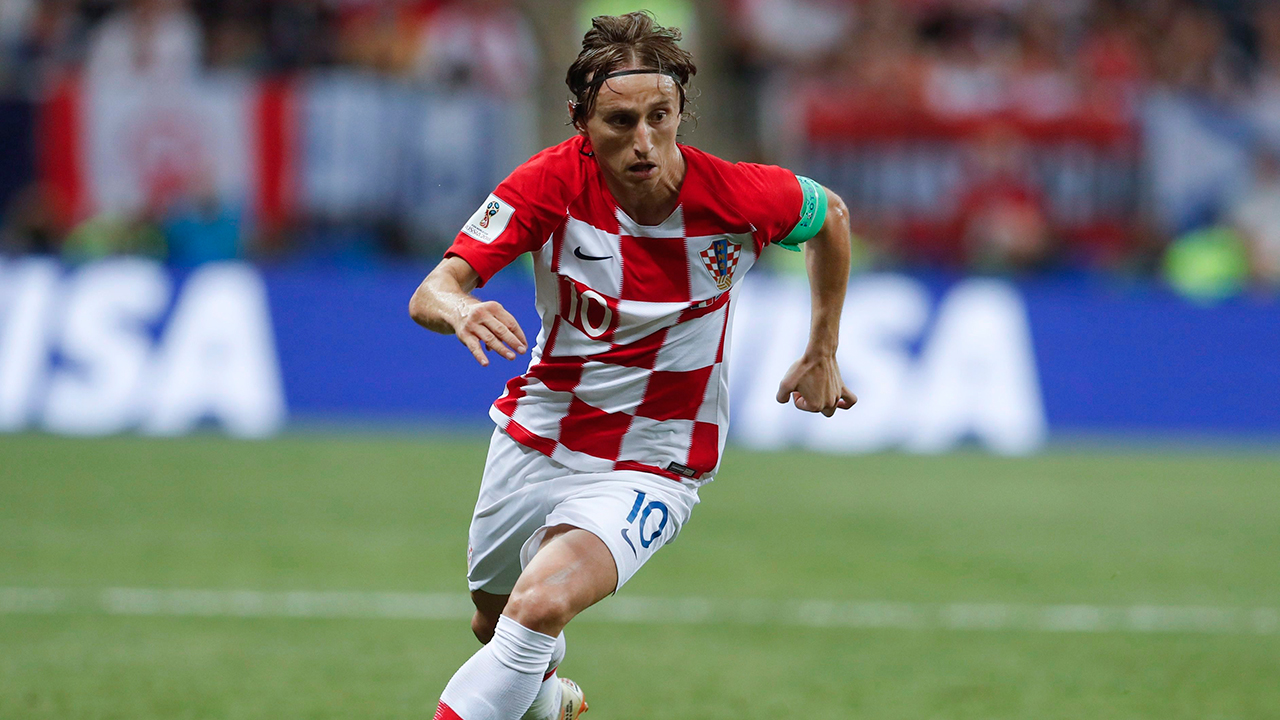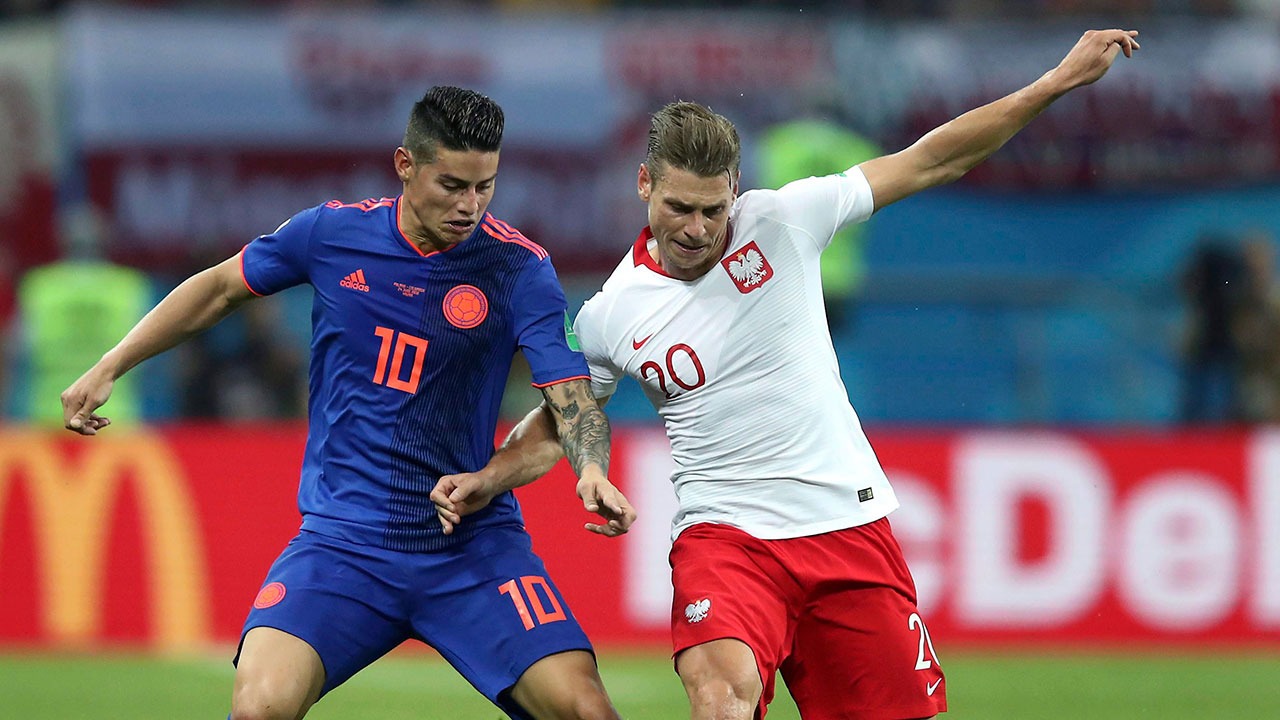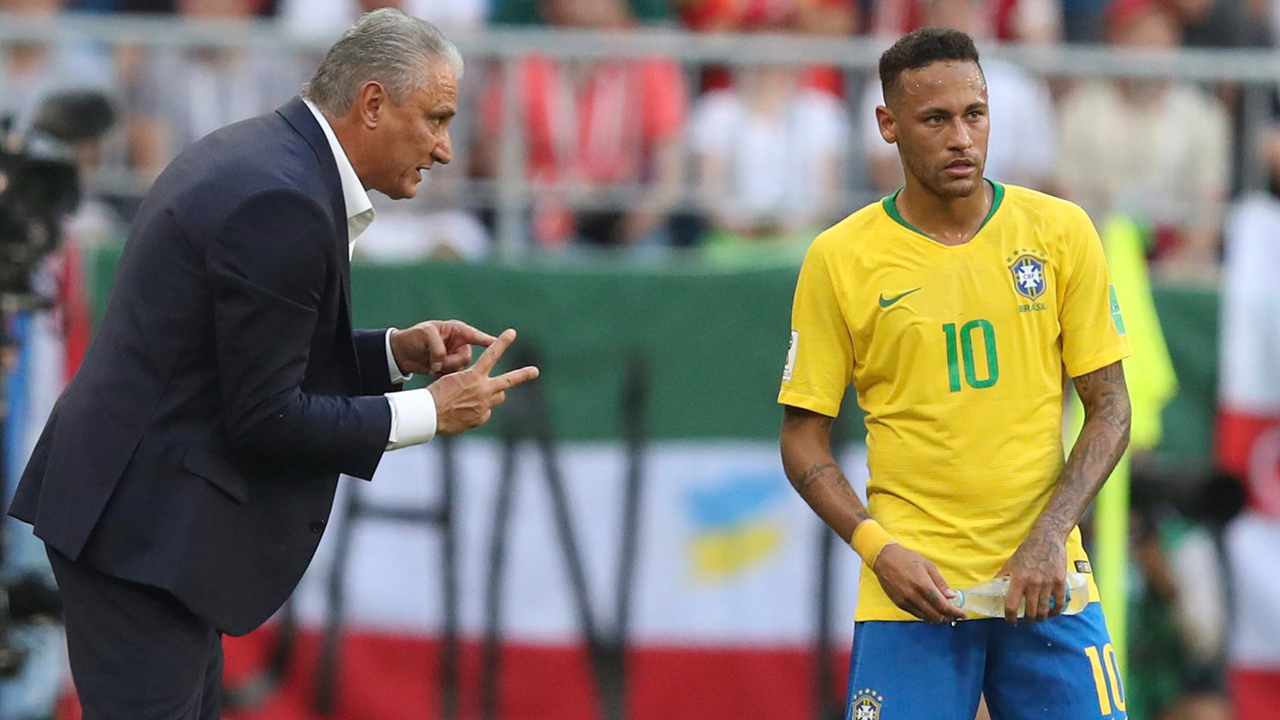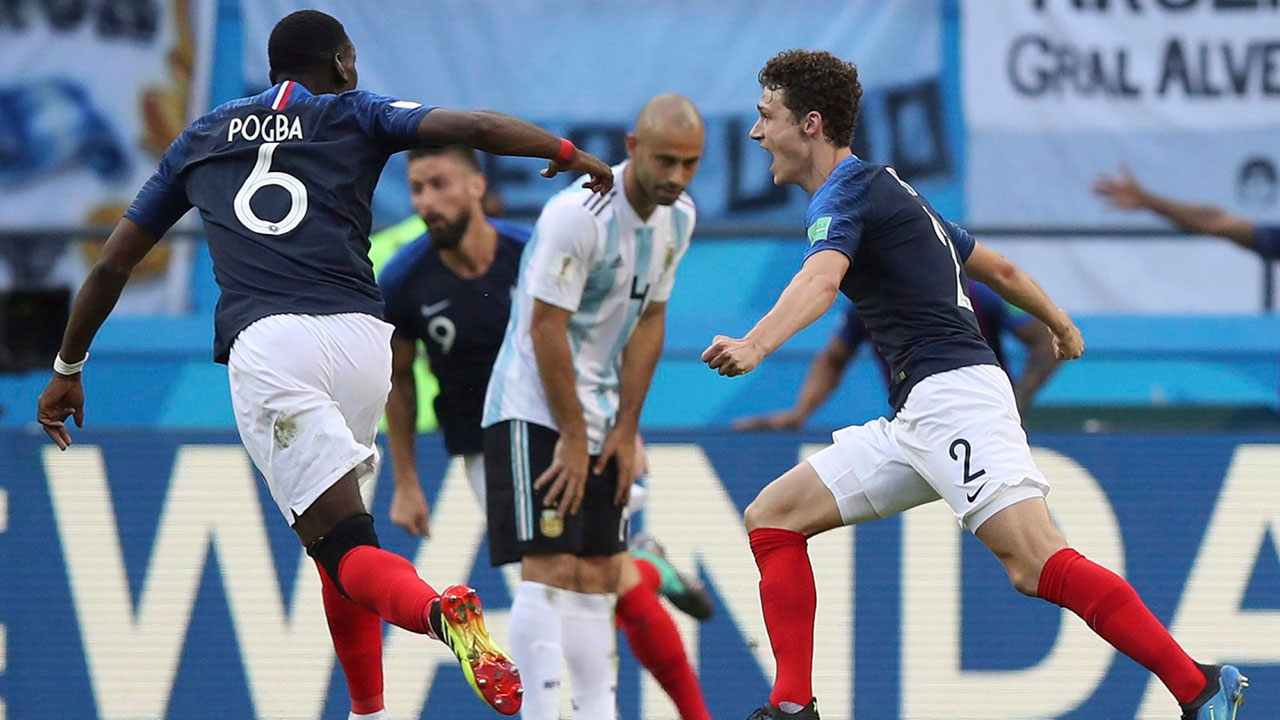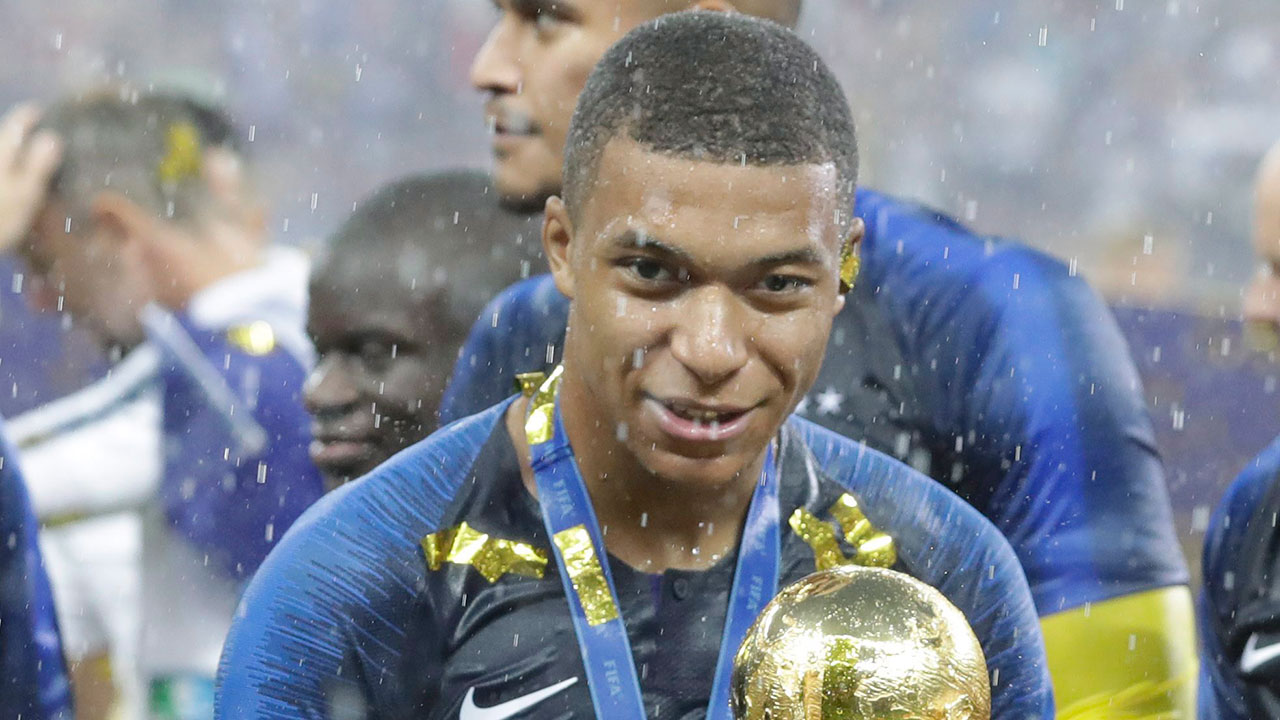A 17-year-old Pele announced his presence to the world at the 1958 World Cup by guiding Brazil to victory over Sweden in the final in Stockholm.
THE MAIN STORY
The 1958 World Cup in Sweden marked a new era in the tournament. Although the festivities in Switzerland four years earlier were televised, the 1958 competition was the first to receive international television coverage. For the first time, people from all corners of the globe had the opportunity to watch soccer’s brightest stars compete in the game’s showcase event.
International television and the World Cup combined to create the perfect stage from which the career of the most recognized athlete of the 20th century and the greatest soccer player of all time was launched: Edson Arantes do Nascimento, more famously known as Pele.
Pele sat out the first two matches because of injury and didn’t play until Brazil’s final group game against the Soviet Union. It wasn’t until the quarterfinals, against Wales, that he scored his first goal, before netting a hat trick in the semifinals versus France. He added a brace in the final, to take his tally to six and help Brazil win the first of five World Cups. The world had been introduced to the mercurial talents of Pele, and the soccer dynasty known as the Brazilian national team was born. Soccer would never be the same again.
[snippet id=3758859]
TOURNAMENT FORMAT
Still trying to perfect the competition, FIFA flirted with another format in 1958. The 16 nations were still divided into four groups, but this time (unlike in Switzerland) all the teams in a group played each other and extra time was not used to settle draws. The top two sides would move on to the quarterfinals, with a one-game playoff used when the second- and third-place teams finished tied on points.
THE FINAL
Following a day of heavy rain, Brazil and Sweden walked out onto a slippery field before 50,000 fans jammed into Stockholm’s Rasunda stadium and millions more around the world watching on television. Brazilian manager Vicente Feola made one key change, taking out defender Newton de Sordi and inserting for the first time in the competition Djalma Santos, a member of the 1954 World Cup team. It proved an astute move: Djalma and Nilton Santos brilliantly combined to defuse the dynamic Swedish scoring duo of Lennart Skoglund and Kurt Hamrin.
It was the Swedes, though, who struck first, Gunnar Gren feeding a pass to Nils Liedholm who skipped past two defenders and fired the ball into the right-hand corner of the net in the fourth minute. It was the first time Brazil trailed in the tournament. The beast sufficiently agitated, Brazil instantly came to life and levelled the affair five minutes later when Garrincha beat his marker and delivered a pass into the middle for Vava who scored. The same pair hooked up at the 30-minute mark, Vava scoring an almost identical goal.
Pele gave Brazil a two-goal cushion in the 55th minute when he netted a stunningly breathtaking goal — standing in a crowd in the penalty area with his back towards the goal, he trapped a high pass with his chest, knocked the ball over his head while being marked by a defender, whirled around and volleyed it past Swedish goalkeeper Karl Svensson. A legend was born.
Winger Mario Zagalo, who went on to coach Brazil to victory at the 1970 World Cup, made it 4-1 13 minutes later. Agne Simonsson scored with 10 minutes left in regulation for Sweden but Pele bagged his second of the game in the 89th minute, rising majestically through the air to score on a header from a Zagallo cross. After two consecutive disappointments — the shocking loss to Uruguay on home soil at the Maracana in 1950 and bowing out to Hungary in the quarterfinals in 1954 — Brazil fulfilled its destiny: champions of the world. As Pele and the rest of the team were in tears, the classy and gracious Stockholm crowd applauded the new world champions. Sportingly, Brazil did a lap of honour around the field carrying a Swedish flag.
QUICK FACTS
Number of participating teams: 16
Top scorer: France’s Just Fontaine (13 goals)
Number of games: 35
Total goals scored: 126
Average goals per game: 3.60
Highest scoring game: France’s 7-3 win over Paraguay on June 8
Total attendance: 868,000
Average attendance: 24,800
MAN OF THE TOURNAMENT
Pele. Yes, Just Fontaine scored a World Cup record 13 goals, but nobody captured the imagination of fans in Sweden like Pele. With six goals to his credit, including a pair in the final, the 17-year-old kid who grew up in poverty announced his presence to the world.
MATCH OF THE TOURNAMENT
Brazil’s 5-2 victory over France in the semifinals. The two teams battled evenly in the opening 45 minutes, and Brazil sat on a precarious 2-1 lead at halftime. In the second half, the Brazilians put on a devastatingly entertaining display as Pele scored a hat trick within 20 minutes. Unbelievable.
EXCLUSIVE CLUB
Pele is one of only three players to have scored in four World Cups (1958-1970). West Germany’s Uwe Seeler (1958-1970) and Germany’s Miroslav Klose (2002-2014) are the others.
PELE’S HAT TRICK OF RECORDS
At 17 years and 239 days, Pele is the youngest player to have ever scored at the World Cup when he found the back of the net against Wales in the quarterfinals. He is also the youngest player ever to win the World Cup and is the only player to win three World Cups (1958, 1962 and 1970).
JUST REWARDS FOR FONTAINE
When Just Fontaine went to Sweden, the centre-forward was not a part of France’s first team. He only made it into the starting lineup when Rene Bliard hurt his ankle in training before the tournament started and was forced to return home to France. Given the chance to start for his country, the Morocco-born Fontaine ran riot in Sweden, bagging a hat trick in France’s opening game, a 7-3 win over Paraguay, and capped off his World Cup performance with a four-goal outburst against West Germany in the third-place match. In just six games, Fontaine, fed sublime passes all tournament long by the incomparable Raymond Koa in midfield, scored a World Cup record 13 goals, a mark that is not likely ever to be broken.
BRAZIL’S TACTICAL REVOLUTION
Brazil introduced its innovative 4-2-4 system at the 1958 World Cup, a lineup that differed from the more traditional Pyramid (2-3-5) and W-M (3-4-3) formations employed in soccer at the time. Under the 4-2-4 scheme, Brazil played with two centre-forwards who were supported in attack by two wingers. By having two attackers play up front in the middle, Brazil forced opposing teams to switch their defensive lineup, as they could no longer play with just one central defender.
Although Brazil’s 4-2-4 featured four players in defence, the system was hardly defensive. Aside from their defensive duties, the two defenders on the wings were obligated to move forward and join the offensive rush. Thus, the formation became 2-4-4 with eight players in attack when Brazil had the ball, allowing the Brazilians to maintain pressure on their opponents and dictate the pace of the game. The key was to have two outside defenders who were quick — as they had to fall back into defence when their opponents were attacking—and had a knack for creating scoring chances. Shortly after Brazil’s World Cup victory in Sweden, most nations switched over to the 4-2-4 system.
ABSENCES AND DEBUTS
The sixth World Cup saw a record number of countries (55) take part in the qualifying round. Several perennial heavyweights (Italy, Spain and Uruguay) never made it out of the qualifiers while the Soviet Union graced the World Cup for the first time. Also debuting were Wales, Scotland and Northern Ireland.
WHAT ABOUT HUNGARY
Wales upset Hungary 2-1 in the playoff to finish second in their group as the Hungarians crashed out in the first round of the qualifiers. But these were not the same Magical Magyars that dazzled spectators and opponents alike four years earlier in Switzerland. Ferenc Puskas, Sandor Kocsis and Zoltan Czibor fled their homeland for Spain in 1956 after the Soviet invasion, never to play for Hungary again.
ONE GAME, TWO DEBUTS
Pele made his World Cup debut on June 15 in Gothenburg against the Soviets. That game also saw the debut of the talented winger Garrincha, dubbed the “Little Bird,” a vital cog in the Brazilian team that would dominate world soccer for years to come.
QUIRKY FACTS
• Brazil’s 1958 victory is still the only time a South American country has won the World Cup on European soil.
• The 1958 World Cup marked the only time all four teams from Great Britain — England, Scotland, Wales and Northern Ireland — qualified for the same tournament.
• After Argentina crashed out of the competition in the first round, they were “welcomed” back home in Buenos Aires by angry fans at the airport who pelted them with garbage.
• Brazil and England battled to a 0-0 draw in the opening round in the first ever goal-less game at the World Cup.
• Brazilian centre-forward Jose Altafini was nicknamed “Mazzola” because he bore a striking resemblance to former Italian captain Valentino Mazzola. Altafini would play for Italy at the 1962 World Cup in Chile.
